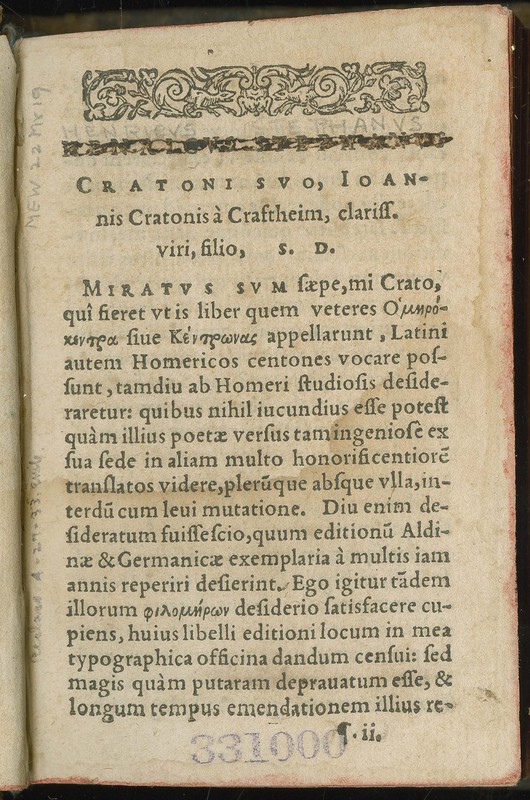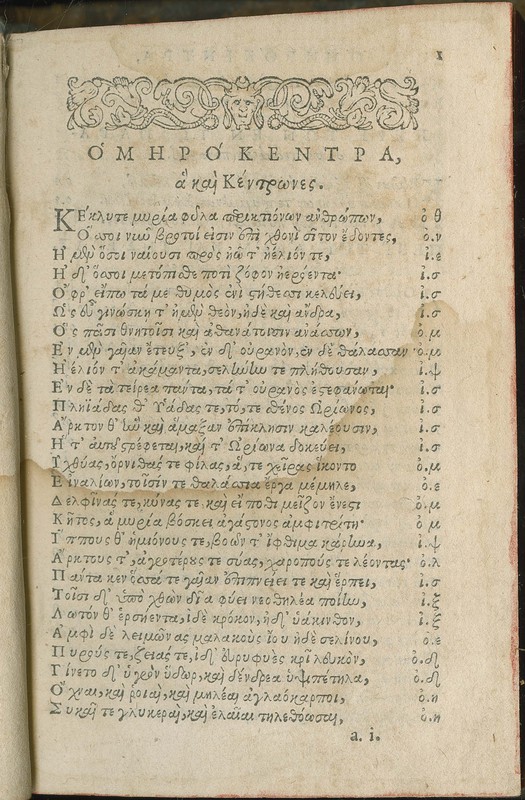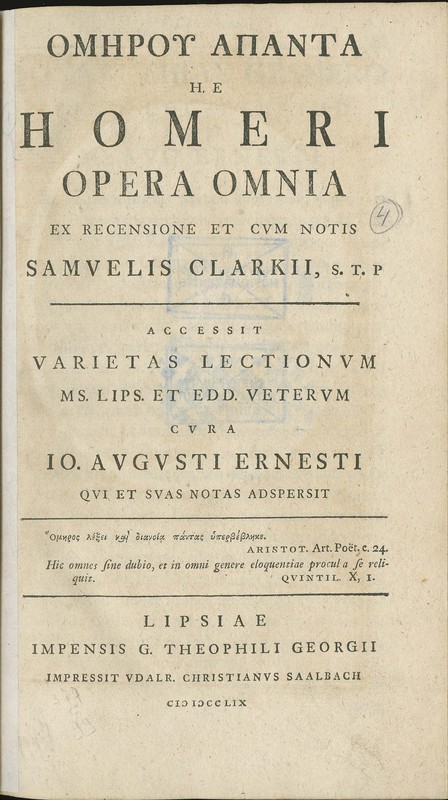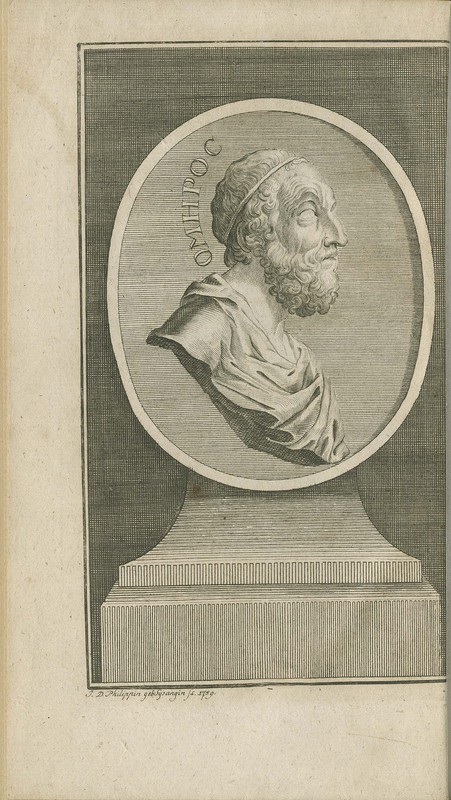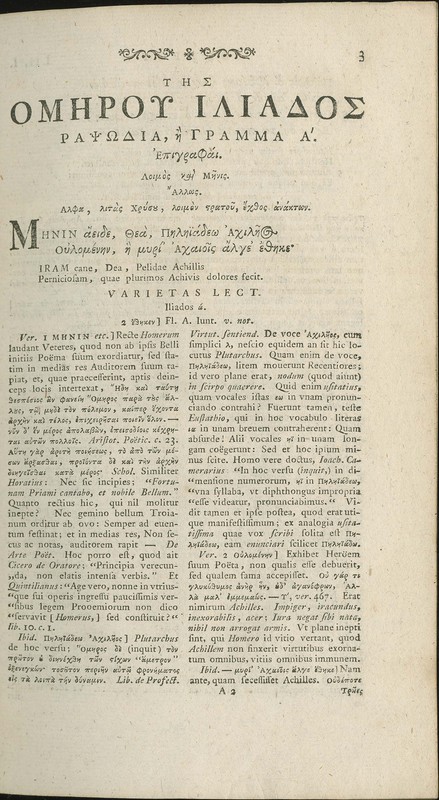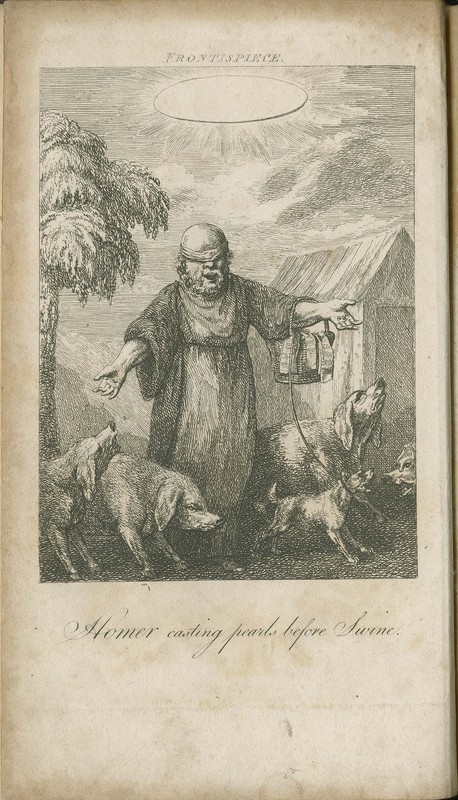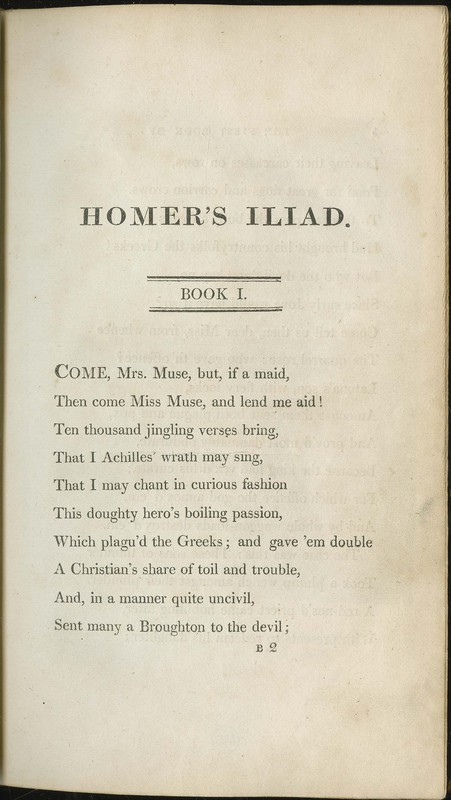The Scholarly and the Burlesque
It would be impossible to separate translations of Homer from the task of editing the two epic poems, particularly when scholars gradually realized that a faithful translation depended on reading the original Greek without any Latin intermediary. The history of Homeric scholarship started at the Library of Alexandria in Hellenistic times, when scholars compared numerous manuscripts of the poems in order to establish a text that was free of mistakes and eliminated extra lines that had been added throughout the centuries. But the evidence from papyri was lost for many centuries until massive excavations in Egypt commenced at the beginning of the twentieth century. With regard to medieval manuscripts, the greatest turning point was Villoison’s discovery of a tenth-century manuscript of the Iliad in the library of San Marco in 1779, which was in fact the earliest extant manuscript of the poem. Unfortunately, that discovery took place after this edition that Samuel Clarke completed in 1759. But we would like to end the next section with a playful note. In fact, in the eighteenth century all this seriousness about accuracy in the translation and Homeric scholarship in general was challenged by the satiric appropriation of the poem, something that Victorian readers would strongly criticize.
Joachim Camerarius
Joachim Camerarius, a German classicist and theologian, was the first scholar to write a comprehensive commentary on the first two books of the Iliad. Originally published in Strasbourg in 1538 and 1540 respectively, they were the first attempt to write a true commentary before the one by the French poet, Jean de Sponde, published in 1583. In his notes, Camerarius offered a basic grammatical analysis of the text, along with some references to later authors and some antiquarian details, but with very little mention of allegory, the typical tool of medieval exegesis. If Camerarius occasionally followed the allegorical method, he could also dismiss it with skepticism. Overall, Camerarius’s goal was to show the ethical value of Homer and to determine the moral principles of the Greek world, all represented in Homer’s epics. And in order to reach a wide audience, he included a Latin translation of these two books.
Friedrich August Wolf
From antiquity, translators, scholars, and even regular readers of the Homeric poems, have detected numerous errors, narrative contradictions, and repetitions. They have also identified passages describing institutions and artifacts belonging to very different time periods. By the end of the eighteenth century, German scholars attempted to address these textual oddities by proposing that the poems were not the creation of a single individual but were the result of editing together separate tales composed by different poets. Led by Friedrich August Wolf (1759–1824), these so-called “analysts” believed that it was possible to identify the original tales that would eventually end up being part of the two poems. As explained in his influential Prolegomena, Wolf argued that the Iliad and Odyssey were composed around 950 B.C.E. and transmitted orally for four-hundred years until they were written down and, consequently, given a sense of artistic unity.
Samuel Clarke
The theologian and philosopher Samuel Clarke (1675-1729) is perhaps best remembered for his theological writings and Boyle lectures, in which he exposed the principle that any interpretation of the Christian doctrine had to be based on the scriptures alone (sola scriptura). But he was also an accomplished translator and editor. In 1706, he translated Newton’s Opticks into Latin. And in 1729, he published his edition of the first twelve books of the Iliad. Only three years later, the last twelve books were published by his son, Samuel Clarke. As the images show, this 1759 edition also incorporates notes by other scholars. In brief, the book is heavily annotated. For instance, the first page of the Iliad displays just the first two verses, which are in turn followed by comprehensive notes.
A Burlesque Translation
In contrast to the great number of scholarly studies on any single aspect of the Homeric text that were published throughout the eighteenth century, an approach to the poems that became very popular among a general audience was that of pure satire. First published in 1762, a burlesque version by Thomas Bridge was eagerly read for decades, although its vulgarity would be eventually censored by Victorian readers. The following is a transcription of the opening verses of book 1 of the Iliad:
Come, Mrs. Muse, but, if a maid,
Then come Miss Muse, and lend me aid!
Ten thousand jingling verses bring,
That I Achilles' wrath may sing,
That I may chant in curious fashion
This doughty hero'sboiling passion
Which plagu'd the Greeks; and gave'em double
A Christian share of toil and trouble,
And, in a manner quite uncivil,
Sent many a Broughton to the devil.

Homer and the Civil War

Acknowledgements


